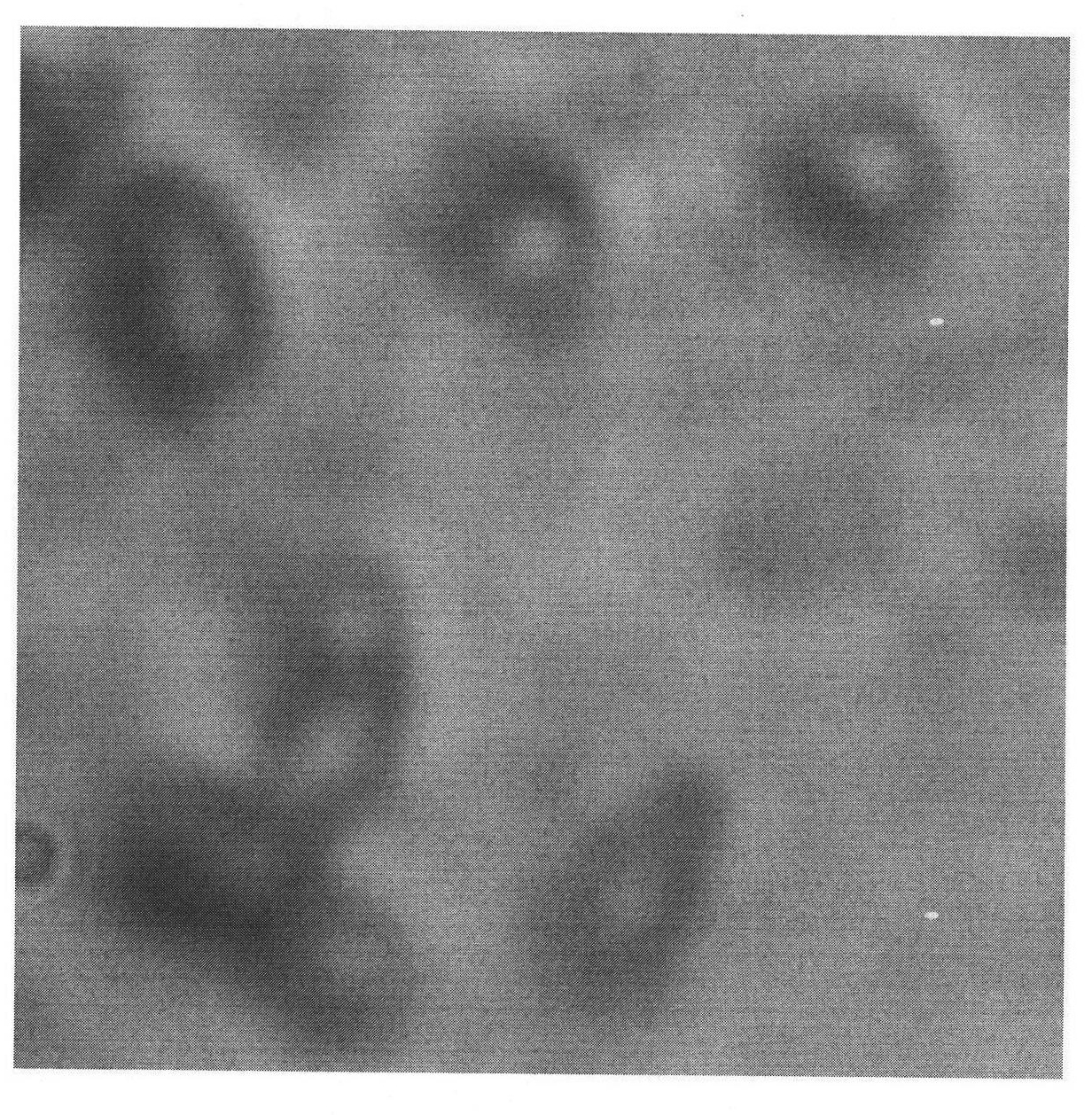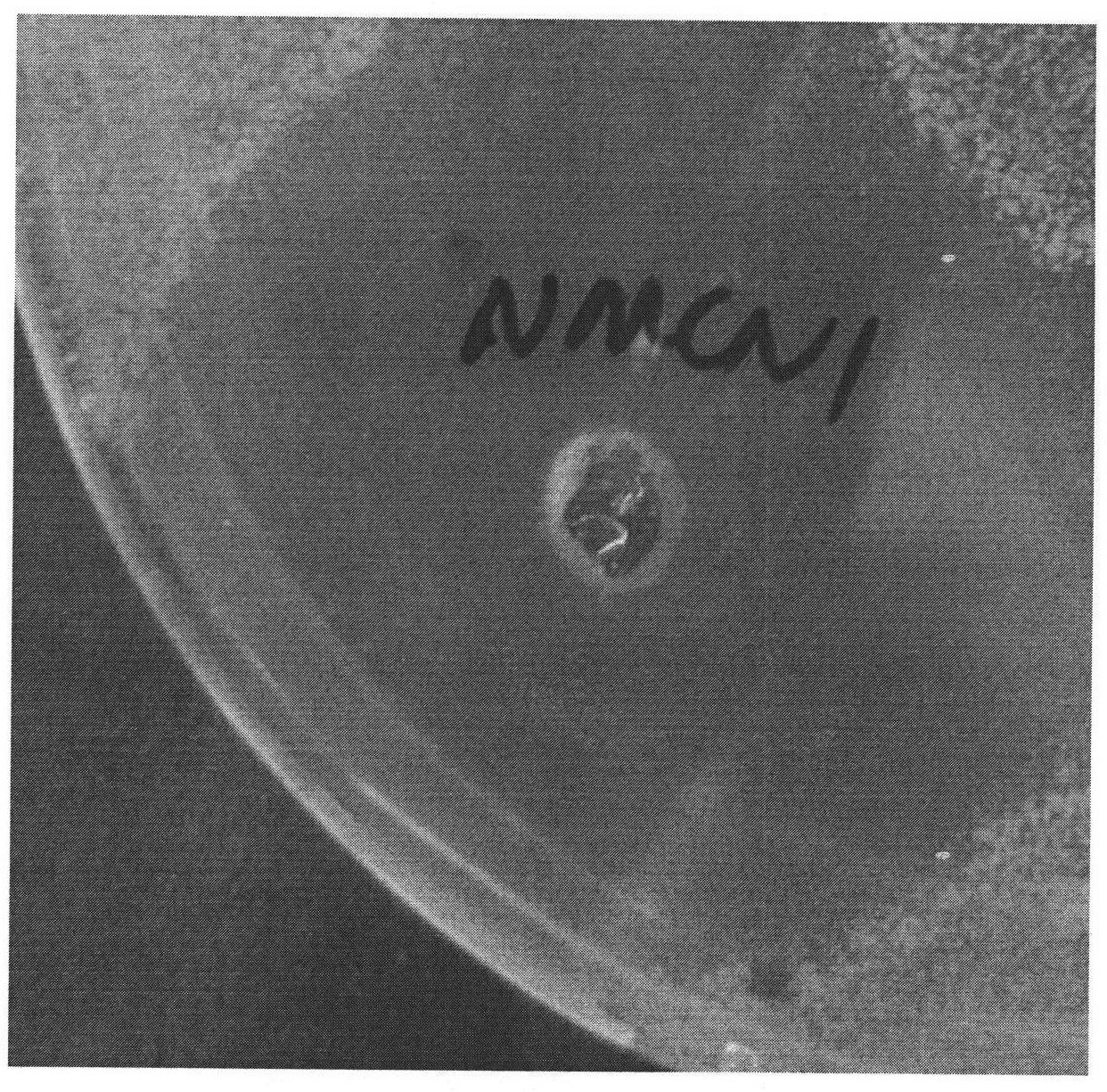Bacillus pumilus NMCN1 and application thereof
A technology of Bacillus pumilus and application method, applied in application, bacteria, fungicide, etc., can solve problems such as serious disease of young fruit, fruit fall off, air, water, soil and food pollution, etc.
- Summary
- Abstract
- Description
- Claims
- Application Information
AI Technical Summary
Problems solved by technology
Method used
Image
Examples
Embodiment 1
[0018] Using the five-point sampling method, use a small shovel to remove the topsoil, take dozens of grams of soil samples at a distance of 5-25 mm, put them into a sampling bag, and mark the sampling time, location, and vegetation. Weigh 5g of soil sample, put it into 45ml of physiological saline, shake it on a shaker for 30 minutes, and let it stand for clarification. Dilute the supernatant with sterile water for 10 -1 、10 -2 、10 -3 、10 -4 、10 -5 Five concentration gradients, 80°C water bath for 10min. Aspirate 200μl coated LB plates and culture overnight at 37°C. After the colony grows on the plate, pick a single colony, streak and purify, and save it by number. The screening obtained Bacillus pumilus NMCN1 CGMCCNo.3377.
Embodiment 2
[0020] The Bacillus pumilus (Bacillus pumilus) NMCN1CGMCC No.3377 of embodiment 1 is carried out morphological characteristic observation and physiological and biochemical characteristic identification, the result shows, this bacterium is Gram-positive, rod-shaped, produces spore (as figure 1 shown). Can grow at 10°C, but not at 50°C, can tolerate pH5.7 and 7% NaCl culture, contact enzyme test, V-P test, citrate utilization test, glucose fermentation and casein test are all positive, starch Hydrolysis test, nitrate reduction test, anaerobic growth test and propionate utilization test were all negative.
Embodiment 3
[0022] The Bacillus pumilus (Bacillus pumilus) NMCN1CGMCC No.3377 of Example 1 was inoculated in liquid LB medium, 180 rpm, 37 ° C shaking culture for 10 hours, the bacteria were collected by centrifugation, after suspension, lysozyme and SDS were added to break the wall, and phenol- Genomic DNA was extracted by chloroform method. Using the extracted total DNA as a template, the 16S rDNA gene of the strain was amplified by PCR with forward primer PRB1601 (5'-GGATCCTAATACATGCAAGTCGAGCGG-3') and reverse primer PRB1602 (5'-GGATCCACGTATTACCGCGGCTGCTGGC-3'). The PCR conditions are: 95°C, 4min; 94°C, 1min; 50°C, 1min; 72°C, 2min; 34cycle; 72°C, 10min, stored at 4°C. After the PCR product was recovered, it was sequenced, and its length was confirmed to be 484bp. The sequencing result was shown in the sequence table, and the similarity with Bacillus pumilusGQ911554.1 in GenBank was 99%.
PUM
 Login to View More
Login to View More Abstract
Description
Claims
Application Information
 Login to View More
Login to View More - R&D
- Intellectual Property
- Life Sciences
- Materials
- Tech Scout
- Unparalleled Data Quality
- Higher Quality Content
- 60% Fewer Hallucinations
Browse by: Latest US Patents, China's latest patents, Technical Efficacy Thesaurus, Application Domain, Technology Topic, Popular Technical Reports.
© 2025 PatSnap. All rights reserved.Legal|Privacy policy|Modern Slavery Act Transparency Statement|Sitemap|About US| Contact US: help@patsnap.com



